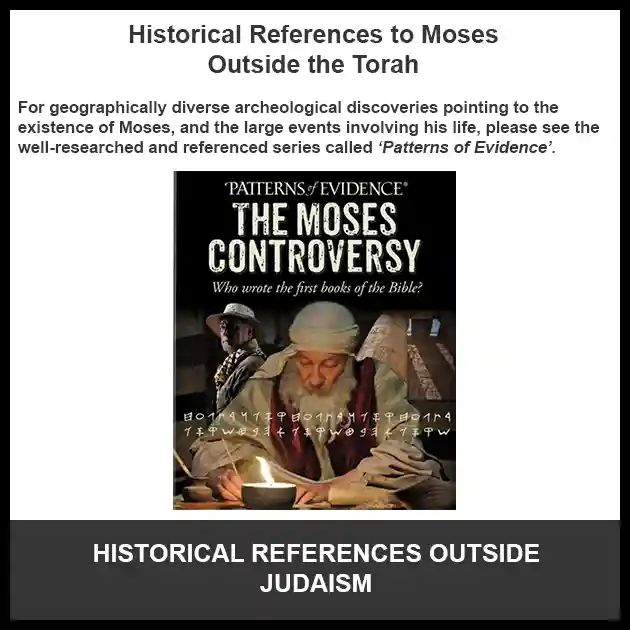HOW TO CHOOSE A RELIGION? IN ONE DAY!
In this how-to, we will show you EXACTLY HOW to go about choosing a religion and why using this method is critically important and superior to other methods.
This is the same “decision process” used by millions to prevent future doubts about your choice.
And you can start and finish TODAY.
So, if you want to stop searching and be confident in your religious decision in 2024, you will love this how-to guide.
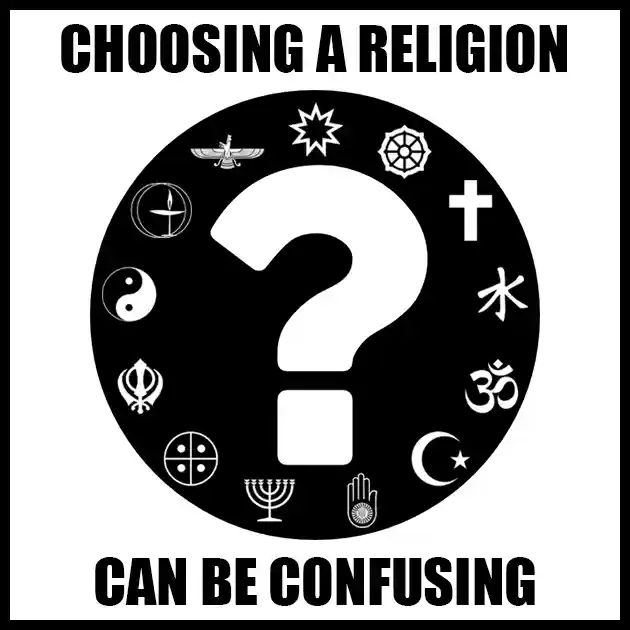
All SECTIONS are contained on this single webpage.
Please proceed through each section completely in sequence by scrolling down.
SECTION #1: WHY DOES IT MATTER AND WHAT IS THE BEST RELIGION DECISION MAKING METHOD?
RELIGION DEFINED
Would it surprise you to learn there is often confusion about what religion means?
To prevent any current or future confusion, we will use the term RELIGION the way Dictionary.com defines it:
3. the body of persons adhering to a particular set of beliefs and practices:

Based on the 3rd dictionary definition of "religion" many groups of people can be labeled as holding a religious viewpoint. Even people who are not typically labeled that way.
EXAMPLE: Those who have not discovered enough heavy evidence for God call themselves Atheists. While others who are still searching, call themselves Agnostics.
The mystery of the beginning of all things is insoluble by us, and I for one must be content to remain an Agnostic.
– Charles Darwin 1809-1882
Two modern strong evidence examples for God are Irreducible Biological Complexity and the Law of Genetic Entropy.
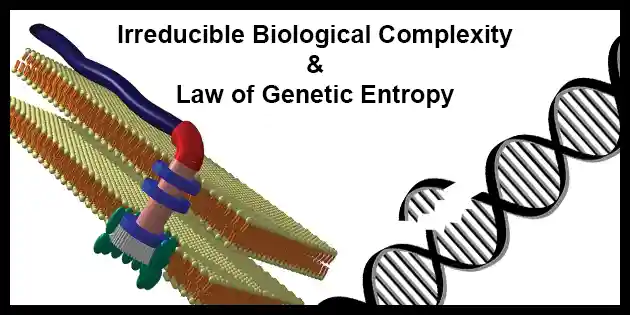
Atheists and Agnostics do fit within the 3rd dictionary definition of religion, but they do not fit completely within the 1st definition of religion concerning ...devotional and ritual observances...
.
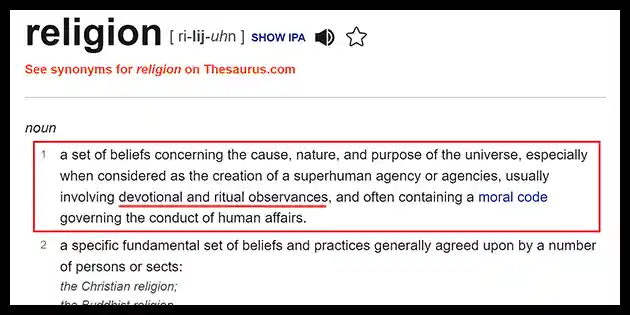
As such, since they do not follow devotional and ritual observances, they are not included as one of the religous groups that we will cover in this how-to guide.
RELIGION AND TRUTH
The process used in deciding on a religion will largely be determined by how important truth is to you.

It has been said that:
The largest impediment to discovering truth; is the belief you already have it.
– Anonymous
The more important TRUTH is to you, the more likely EVIDENCE is also important to you.
Some quantity of evidence can be located for almost anything. It is the weight of evidence that is the most important.
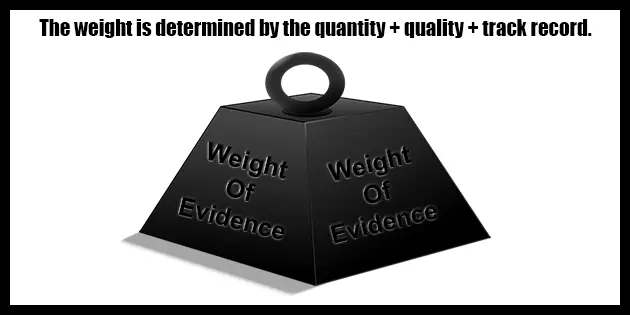
The weight is determined by the quantity + quality + track record. The track record pertains to the person(s) or group(s) producing the evidence.
We call these three things together, WEIGHT OF EVIDENCE.
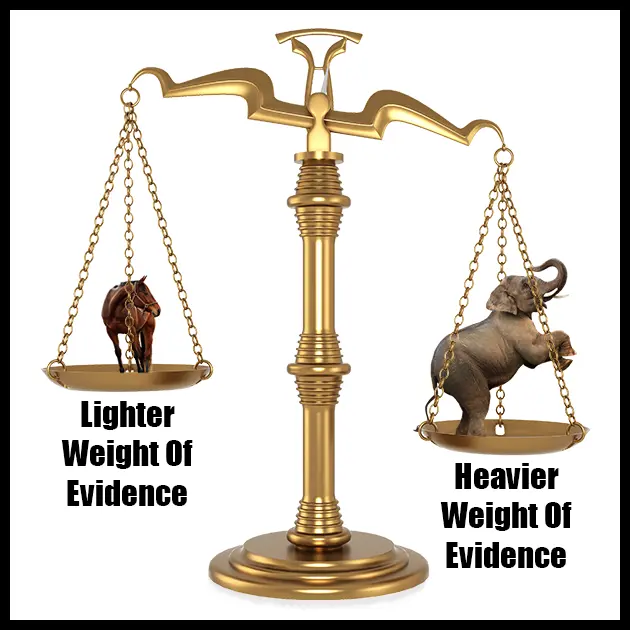
Heavy Weight Of Evidence = Truth.
UNDERSTANDING WHY THE RELIGION DECISION MAKING METHOD MATTERS
There are two primary paths you can choose within the following Religion Decision Making Method Chart, which has been used across the world.
One path is driven by Likes and Dislikes which then form beliefs, and another is driven by the weight of evidence.
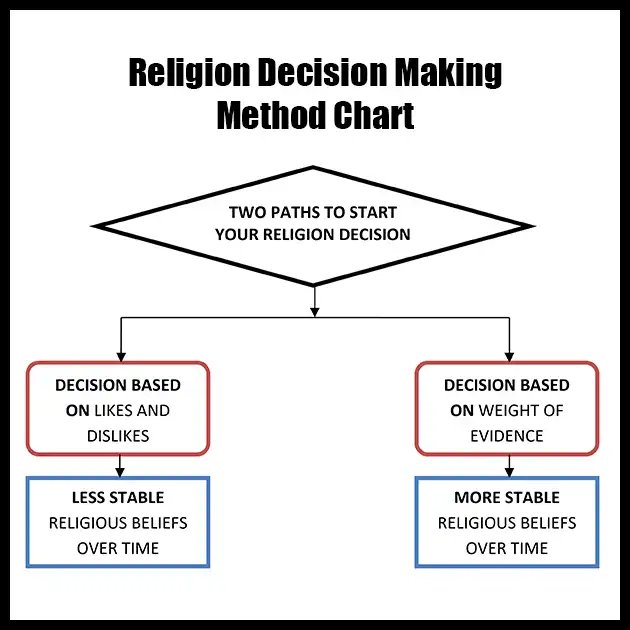
The path you choose will determine the process utilized in deciding on a religion.
Matching you to your religion can take some time, even if you have a good resource like this how-to guide, but locating that perfect long-term religion is worth the effort.
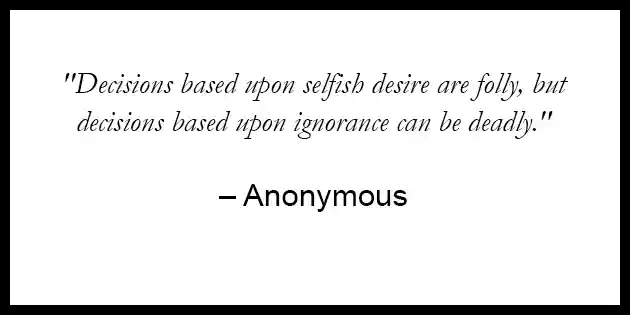
What path do you choose?
WEIGHT OF EVIDENCE PATH = Stable
LIKES AND DISLIKES PATH = Unstable
Choose wisely.
THE RELIGION DECISION METHOD
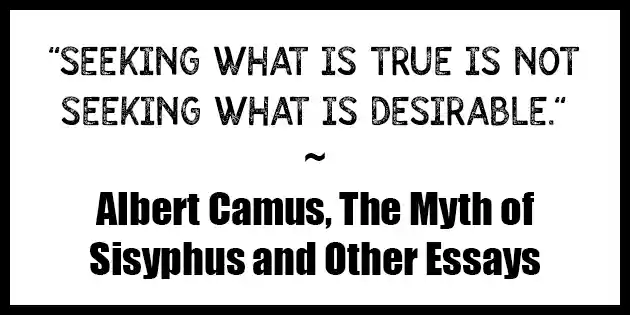
If you chose the unstable LIKES AND DISLIKES PATH approach to choosing a religion, your journey ends here unless you rethink your strategy.
Hopefully, you decided on the WEIGHT OF EVIDENCE PATH, in which case please continue with this How To Choose A Religion? In One Day! how-to guide as we provide the weight of evidence for each religion.
We have already established that quantity + quality + track record = weight of evidence.
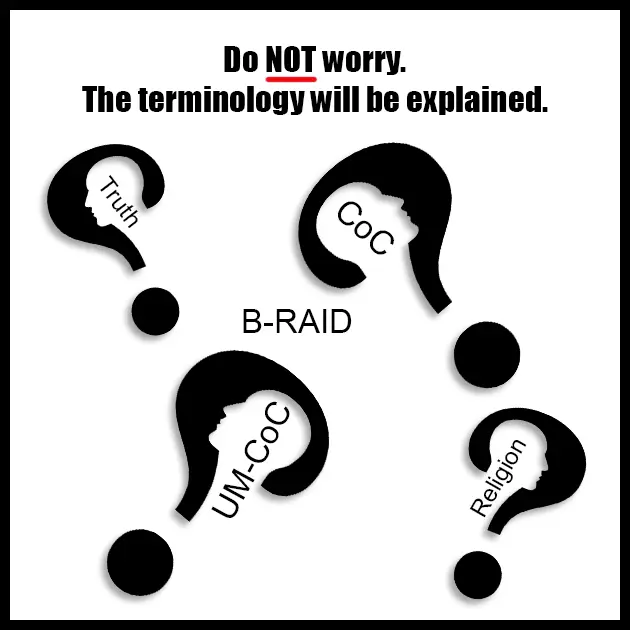
In the following short sections, we will cover the following for each religion:
Basic Information
B-RAID System Evidence (quantity + quality)
Chain-of-Custody Evidence (track record)
Equals Accuracy Over Time (weight of evidence)
We will cover what all this means shortly.
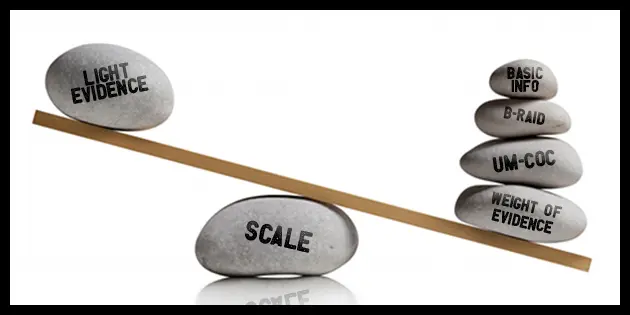
The most unbiased method is to apply the WEIGHT OF EVIDENCE SYSTEM to each religion's manuscripts. Using this criteria will provide the best option in selecting the correct religion for you.
The resulting data has been collected and analyzed by an international team of professionals who are themselves members of the religion they analyzed.

B-RAID SYSTEM OF EVIDENCE
(quantity + quality)
Introduction:
We will quickly discuss the B-RAID system and its importance.
What does the acronym B-RAID mean?
According to Abbreviations.com, the acronym B-RAID stands for Biblical Redundant Array of Independent Documents.
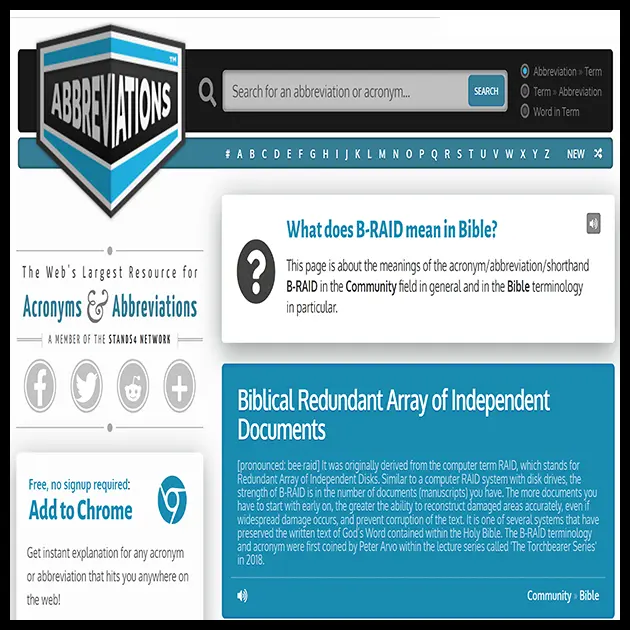
Keep in mind, the general B-RAID system (which is what is used here) can apply to any collection of religious or non-religious documents and has been utilized to an extent on things such as Aristotle's writings.
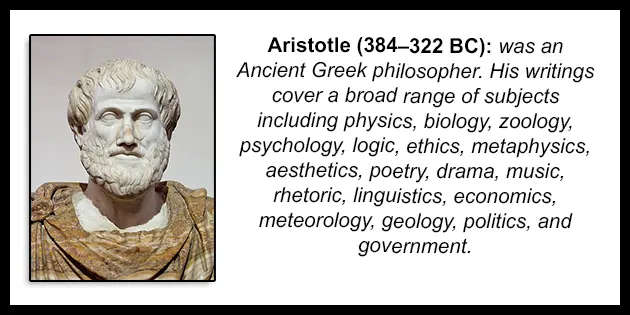
B-RAID can be defined as:
A series of redundant duplicated documents that were originally produced under stringent standards and are then geographically distributed and individually protected, which can later be collectively examined to accurately reproduce more of the same documents or to validate and correct other similar documents.
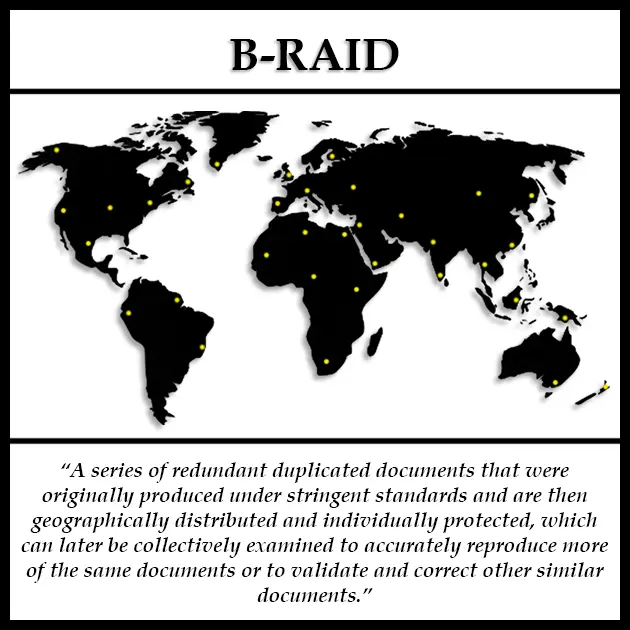
What is the origin of the term B-RAID:
B-RAID originated as part of an advanced historical research project. It was first published by one of the lead team members through The Torchbearer Series within a group of lectures and lecture notes, and later in numerous books. For more information, please see the evidence-based religious studies program published by The Torchbearer Series.
The General B-RAID System:
The core information researched and collected related to the B-RAID system was obtained from peer-reviewed reference sources, which have not been disproven by religious scholars or by non-religious academia.
CHAIN-OF-CUSTODY FOR EACH RELIGION:
(track record)
Introduction:
We will quickly discuss the Chain-of-Custody as well as the Unbroken Manuscript Chain-of-Custody (UM-CoC) and its importance.
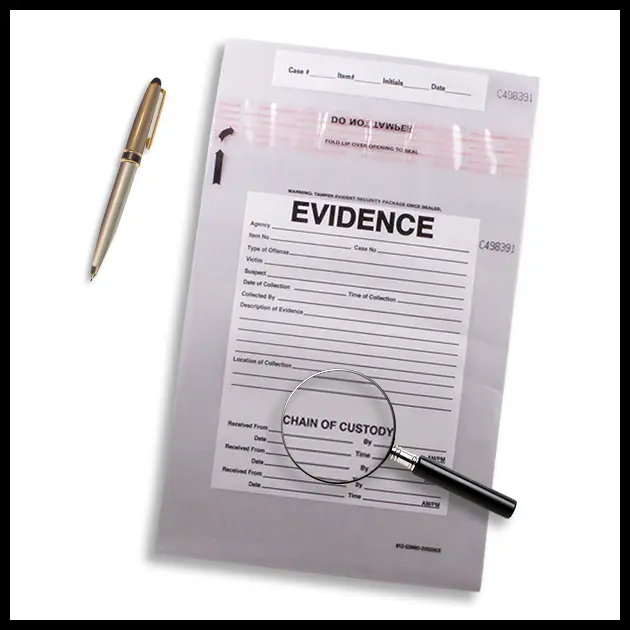
Chain-of-Custody is defined as:
The chronological documentation, or paper trail, that records the sequence of custody, control, ownership, transfer, analysis, and disposition of physical or electronic evidence.
Unbroken Manuscript Chain-of-Custody (UM-CoC) can be defined as:
An unbroken paper trail that records the sequence of custody, control, ownership, transfer, analysis, and disposition of physical manuscripts over a period of time. This system is often described using the acronym UM-CoC according to Abbreviations.com.

Unbroken Manuscript Chain-of-Custody (UM-CoC) System:
Just as with the B-RAID system, the evidence collected on each religion's UM-CoC system (paper trail) was obtained from peer-reviewed reference sources, which have not been disproven by religious scholars nor by non-religious academia.
EQUALS ACCURACY OVER TIME FOR EACH RELIGION:
(weight of evidence)
B-RAID EVIDENCE (quantity + quality) combined with UM-COC EVIDENCE (track record) equals ACCURACY OVER TIME (weight of evidence).
This resulting data was condensed into a single line, which we have extracted with permission from the publisher of the full dataset, and is included at the end of all the sections.
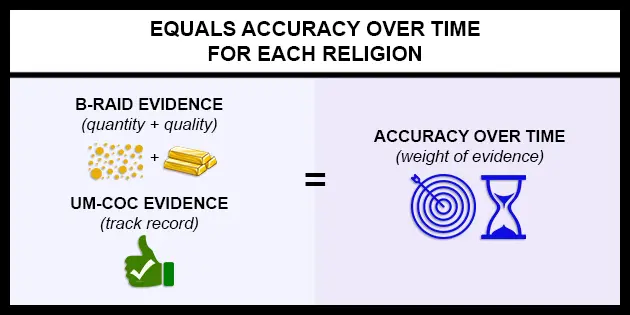
SECTION #2: CHRISTIAN RELIGION: NEW TESTAMENT
BASIC INFORMATION ABOUT THE CHRISTIAN RELIGION: THE NEW TESTAMENT
Introduction:
This is the first of the five major religions we will cover before we discuss the smaller minor religions.
The following will collectively answer the most basic prerequisites and introductory questions to what Christianity is about, without discussing the long list of Christian beliefs, and then we will discuss quantity + quality + track record = weight of evidence.
We will do this same process for each religion.
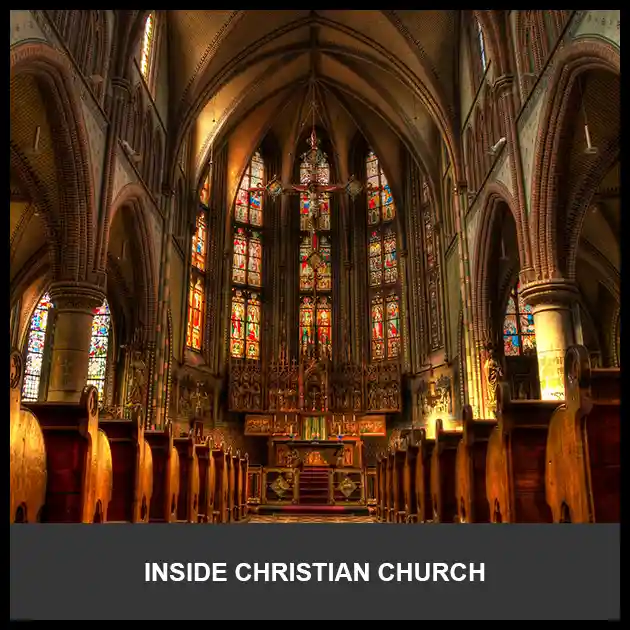
What is the name given to members of Christianity?
Christianity is comprised of (made up of) those who call themselves Christians.

What is the current total global Christian population size of followers?
According to World Population Review, Christianity has 2.38 billion estimated followers as of 2020. The population of Christians is expected to continue to grow in 2024 and beyond.
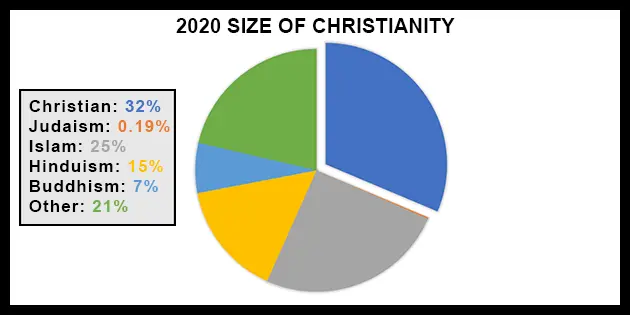
What are the most important Christian manuscripts / Christian texts?
Most Christians view the New Testament and Old Testament texts in reverence. Both texts are contained within a single book often referred to as the Bible.

Who started or founded Christianity?
Jesus, whose name is Yahshua in his native Hebrew language. Jesus is the only religious leader in our list who proclaimed to be God incarnated in physical form. Thousands of his original followers stated they witnessed Jesus perform miraculous events, including his coming back from the dead after being tortured to death. Followers of Jesus often refer to him by the title of Christ, Messiah, Lord, God, God the Son, King of Kings, Prince of Peace, etc.
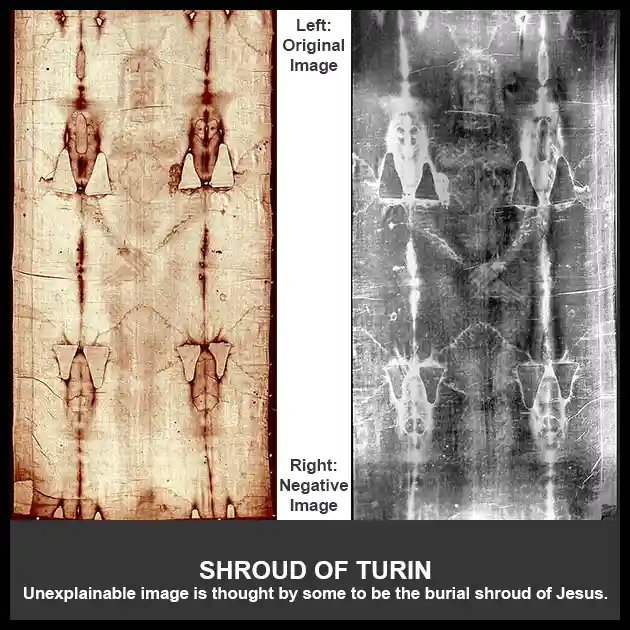
When and how did Christianity begin?
Christianity began when Jesus started his ministry around the age of 30 years old at approximately 27 A.D. At that time period many Jews and pagans – both for and against Jesus – wrote about what they saw and heard as events unfolded.

What is Christianity’s most important geographic location or holy site?
Jerusalem, Israel.
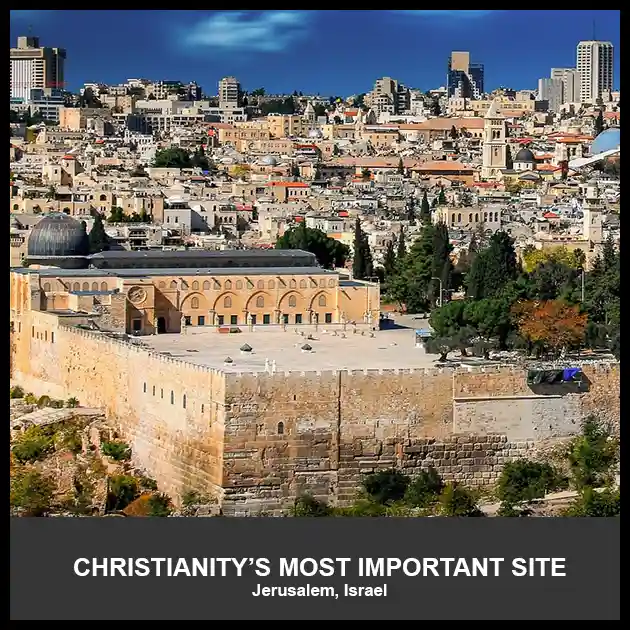
What are Christianity’s most important historic events?
The overwhelming majority of Christians will tell you that the most important events in Christianity are the birth, death, and resurrection of Jesus, and yet the day and month of Jesus's birth are not recorded. While the other two events – his death and resurrection – were preserved as written records coinciding with (and spanning) the first four of the seven Jewish high holy feasts (Passover, Unleavened Bread, First Fruits, and Pentecost). Many followers of Jesus view the first four events as being fulfilled by Jesus leaving the last three events to be fulfilled in the future.
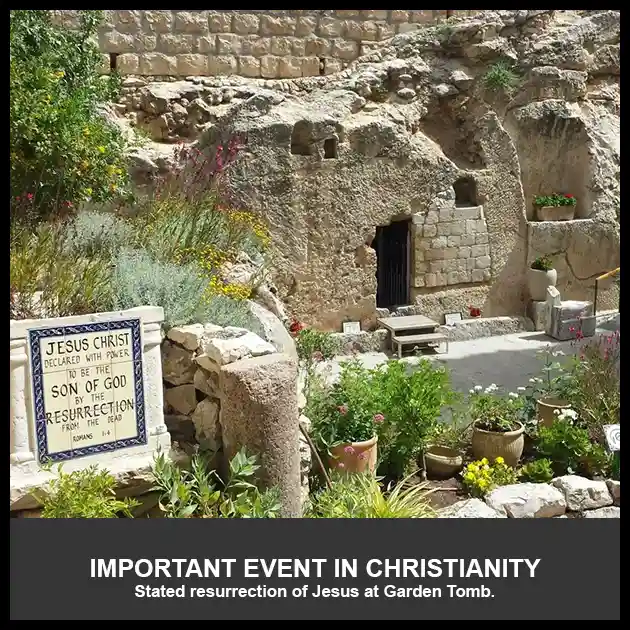
EQUALS ACCURACY OVER TIME FOR THE CHRISTIAN RELIGION: THE NEW TESTAMENT
(weight of evidence conclusion)
Introduction:
In this very short section, we will discuss the results of the data collected from B-RAID and UM-Coc for the Christian religion.
Christian B-RAID System Evidence (quantity + quality) data plus the Unbroken Manuscript Chain-of-Custody Evidence (track record) data from the previously discussed peer-reviewed sources was condensed into the following single line, which we have extracted with permission from the publisher of the full dataset.
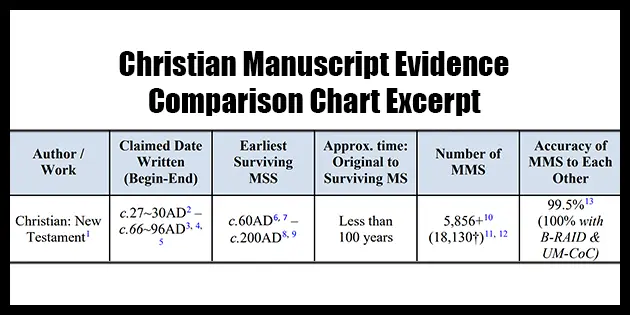
Weight of Evidence Conclusion:
The calculated accuracy of the Christian New Testament manuscripts over time is very high at 99.5%.
When incorporating the B-RAID and UM-CoC datasets the resulting accuracy increases to a score of 100%.
This score would indicate that the Christian manuscripts were accurately transmitted from the time they were originally written until current modern times.
We will move on through each religion using these same standards, and then it will be up to you to decide on a religion based on the weight of evidence.
Note: A link to the full dataset, including references and more information, is available at the end.
SECTION #3: JEWISH RELIGION: TORAH
BASIC INFORMATION ABOUT THE JEWISH RELIGION: TORAH
Introduction:
The following will collectively answer the most basic prerequisites and introductory questions to what Judaism is about without discussing the long list of Jewish beliefs.

What is the name given to members of Judaism?
Judaism is comprised of (made up of) those who call themselves Jews.

What is the current total global Jewish population size of followers?
According to World Population Review, Judaism has 14.6 million estimated followers as of 2020. The population of Jews is expected to continue to grow in 2024 and beyond.
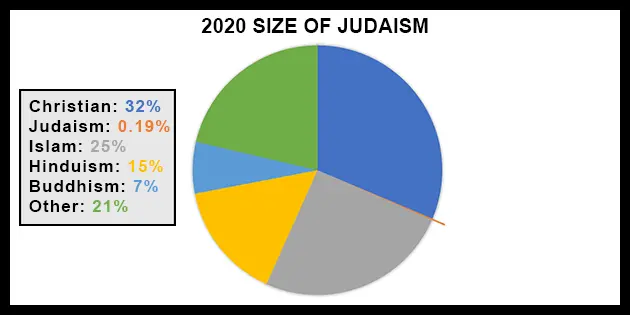
What are the most important Jewish manuscripts / Jewish texts?
Most Jews view the Torah in reverence, but they also hold later texts in high regard.

Who started or founded Judaism?
Many would state that Judaism was founded by Abraham, but others may state that God himself founded its roots around the time of the first man and woman on earth. Abraham (c.1800 B.C.), whose name was originally Abram, was the Hebrew patriarch of at least three religions – Judaism, Christianity, and Islam. Thousands are said to have been witnesses to God performing miraculous events on behalf of Abraham and his family. Followers of Abraham's writings often refer to him by the title of prophet.
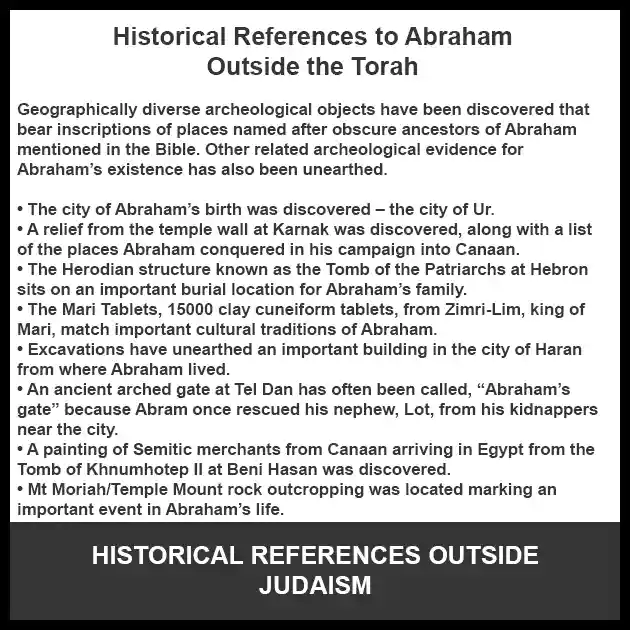
When and how did Judaism begin?
Judaism is said to have begun with Abraham, but many events may not have been written until much later by Moses in around 1350 B.C. Since Judaism could make the statement that its roots extended back to the first man and woman on earth, it is difficult to state when its true beginning was.
What is Judaism's most important geographic location or holy site?
Jerusalem, Israel.
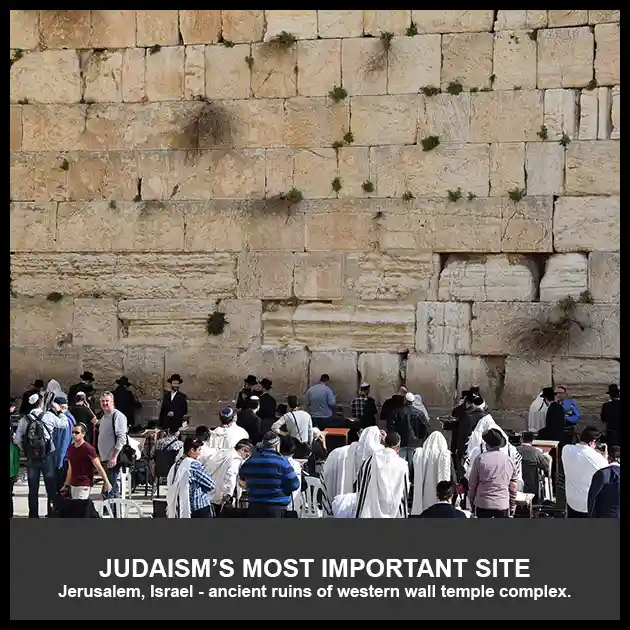
What are Judaism's most important historic events?
Most Jews will not debate that the most important events in Judaism are the seven marked by the seven high holy feasts, which the Jews proclaim God told them to keep forever as a remembrance of those events. These high holy feasts include Passover, Unleavened Bread, First Fruits, Pentecost, Trumpets, Atonement, and Tabernacles.
EQUALS ACCURACY OVER TIME FOR THE JEWISH RELIGION: TORAH
(weight of evidence conclusion)
Introduction:
In this very short, section we will discuss the results of the data collected from B-RAID and UM-Coc for the Jewish religion.
Jewish B-RAID System Evidence (quantity + quality) data plus the Unbroken Manuscript Chain-of-Custody Evidence (track record) data from the previously discussed peer-reviewed sources was condensed into the following single line, which we have extracted with permission from the publisher of the full dataset.

Weight of Evidence Conclusion:
The calculated accuracy of the Jewish Torah (Old Testament) manuscripts over time are extremely high at 99.99996%.
When incorporating the B-RAID and UM-CoC datasets the resulting accuracy increases to a score of 100%.
This score would indicate that the Jewish manuscripts were accurately transmitted from the time they were originally written until current modern times.
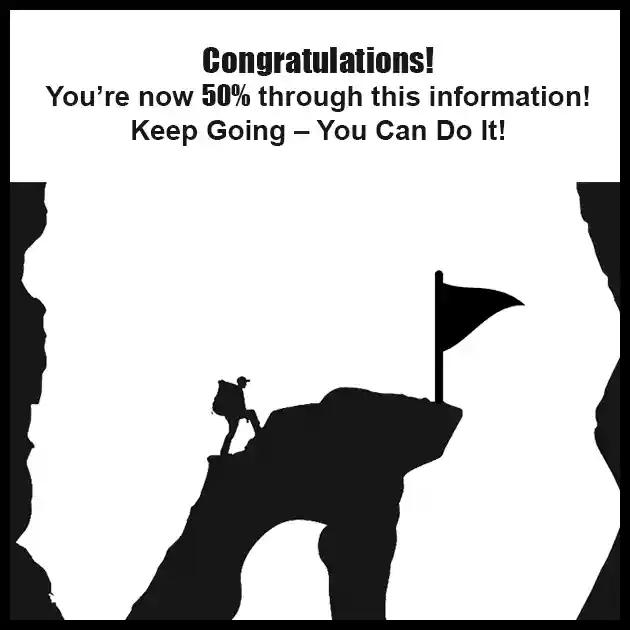
SECTION #4: MUSLIM RELIGION: QURAN
BASIC INFORMATION ABOUT THE MUSLIM RELIGION: QURAN
Introduction:
The following will collectively answer the most basic prerequisites and introductory questions to what Islam is about without discussing the long list of Muslim beliefs.

What is the name given to members of Islam?
Islam is comprised of (made up of) those who call themselves Muslims.
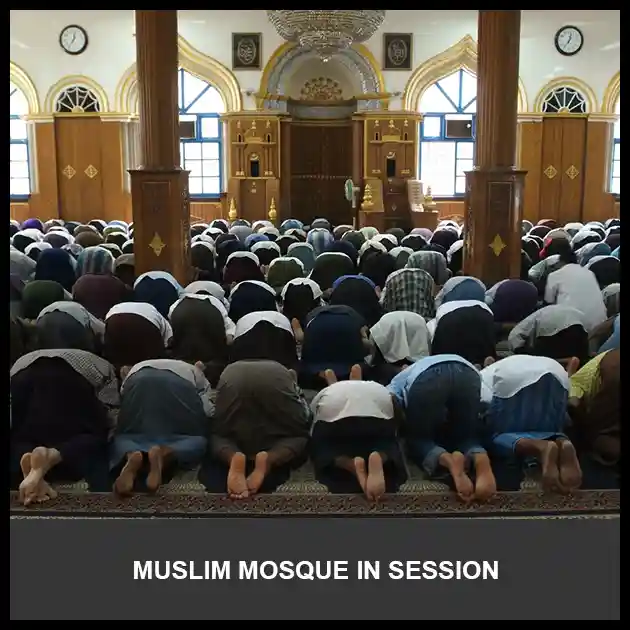
What is the current total global Muslim population size of followers?
According to World Population Review, Islam has 1.91 billion estimated followers as of 2020. The population of Muslims is expected to continue to grow in 2024 and beyond.
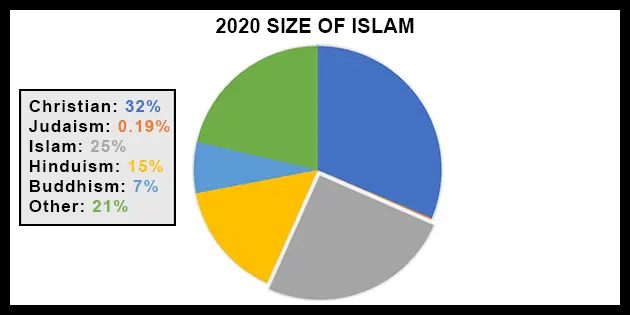
What are the most important Muslim manuscripts / Muslim texts?
Muslims hold the Quran in the highest reverence and do not hold any other text as superior.

Who started or founded Islam?
Muhammad started Islam, was an Arab born in Mecca, Saudi Arabia, and lived between 570 A.D. to 632 A.D. Muhammed described himself as a prophet and wrote the text that became the basis for the modern sacred book used by Muslims called the Quran. Muhammad did not claim to be God, did not claim to have supernatural abilities, and did not perform miracles for his followers.
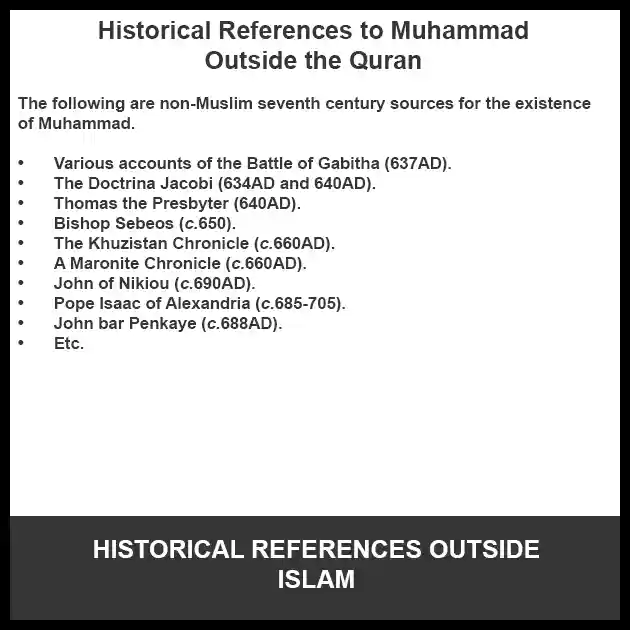
When and how did Islam begin?
Muhammad wrote the original Muslim text in his forties sometime after 610 A.D., while he said he heard a voice speaking to him in a mountain cave called Hira. His followers stated he would spend days secluded in the cave in prayer and meditation. Muhammad’s wife stated he would have mysterious epileptic seizures while in the cave, and that the seizures were convincing evidence for the otherworldly origin of Muhammad's written inspirations for his followers around him – who proclaimed that his messages were from the Angel Gabriel. All of Islam’s various original Quran versions from 634 A.D. – 663 A.D. were collected and destroyed by Uthman ibn Affan, (who was the second cousin and son-in-law to Muhammad) in the year 653 A.D. and were rewritten. This newly rewritten and standardized version was distributed in 653 A.D. and is called the Uthmanic Codex, with the finished form of it called the Quran. Many modern Muslims are unaware that these events took place, although stated by Muslim leaders.
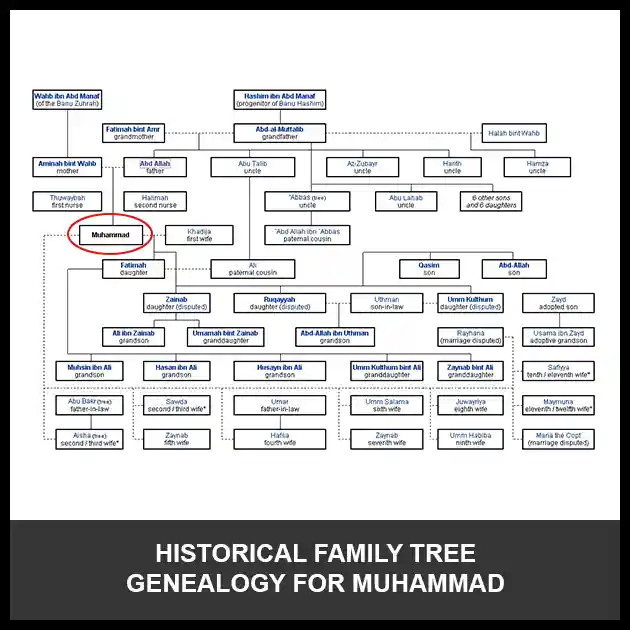
What is Islam’s most important geographic location or holy site?
The Kaaba in Mecca, Saudi Arabia.
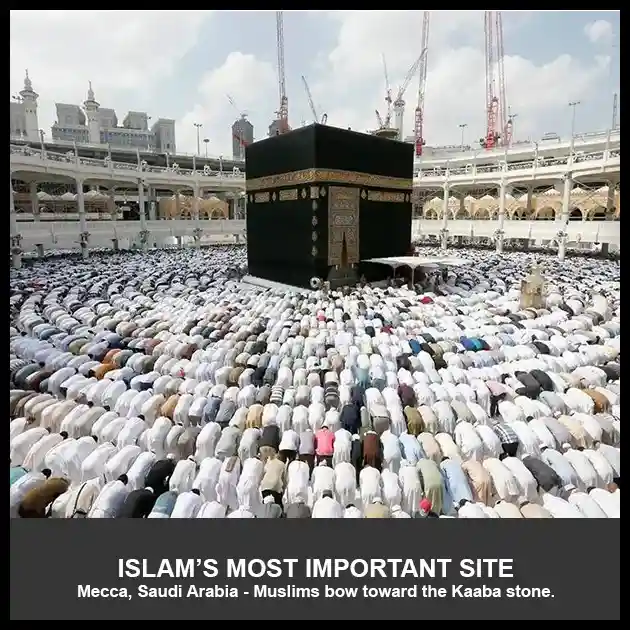
What are Islam’s most important historic events?
The majority of Muslims would say the birth of Muhammad, and Muhammad writing the notes which became the Quran.

EQUALS ACCURACY OVER TIME FOR THE ISLAMIC RELIGION: QURAN
(weight of evidence conclusion)
Introduction:
In this very short section, we will discuss the results of the data collected from B-RAID and UM-Coc for the Muslim religion.
Muslim B-RAID System Evidence (quantity + quality) data plus the Unbroken Manuscript Chain-of-Custody Evidence (track record) data from the previously discussed peer-reviewed sources was condensed into the following single line, which we have extracted with permission from the publisher of the full dataset.
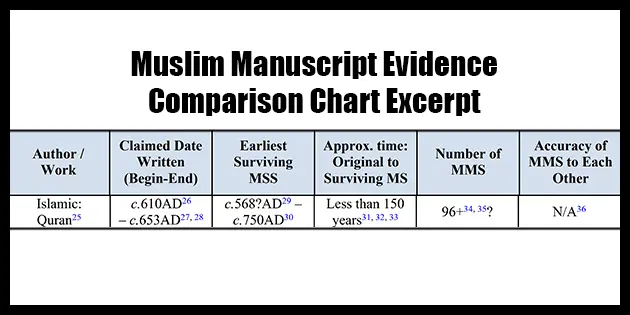
Weight of Evidence Conclusion:
The calculated accuracy of the Muslim Quran manuscripts over time is not applicable as represented by a (N/A) within the excerpt. This is because all of Islam’s various original Quran versions were collected and destroyed by Uthman ibn Affan (second cousin and son-in-law to Muhammad) and were rewritten. Therefore, there is no way to verify the accuracy of the new Uthmanic Codex versions compared to the original text.
In the case of the Muslim Quran, both the general B-RAID system and UM-CoC were intentionally broken and failed. Perhaps in the future, enough lost originals will be discovered to restore B-RAID while paired with a known Chain-of-Custody for the discovery, which could then enable a B-RAID/UM-CoC score.
SECTION #5: HINDU RELIGION: UPANISHAD
BASIC INFORMATION ABOUT THE HINDU RELIGION: UPANISHAD
Introduction:
The following will collectively answer the most basic prerequisites and introductory questions to what Hinduism is about without discussing the long list of Hindu beliefs.

What is the name given to members of Hinduism?
Hinduism is comprised of (made up of) those who call themselves Hindus.
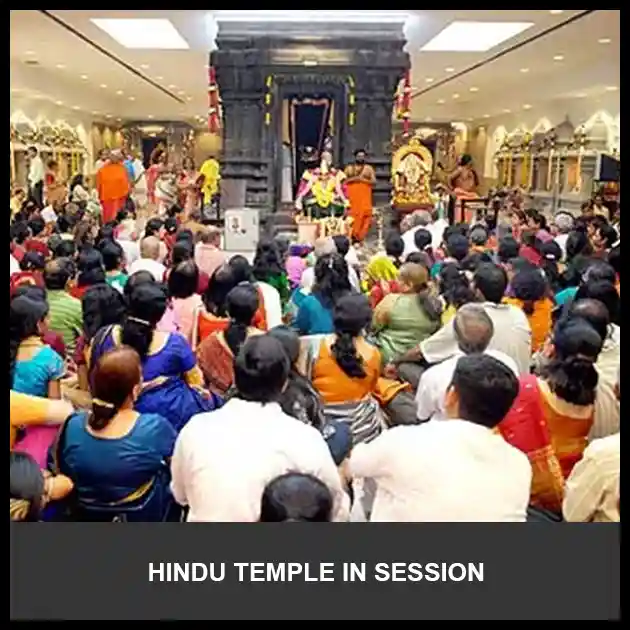
What is the current total global Hindu population size of followers?
According to World Population Review, Hinduism has 1.16 billion estimated followers as of 2020. The population of Hindus is expected to continue to grow in 2024 and beyond.
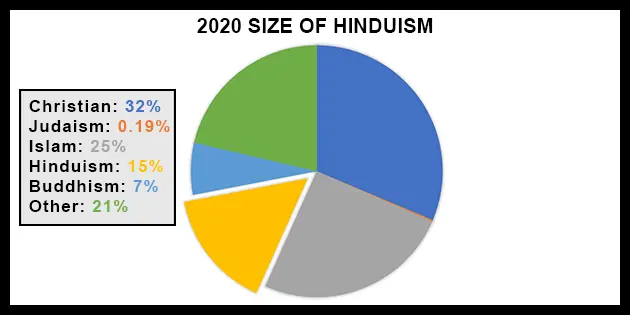
What are the most important Hindu manuscripts / Hindu texts?
Most Hindus view the collection of texts called the Upanishad as sacred scripture, with the fully authoritative text called the Vedas, but many other texts might be held in high regard depending on the Hundu.
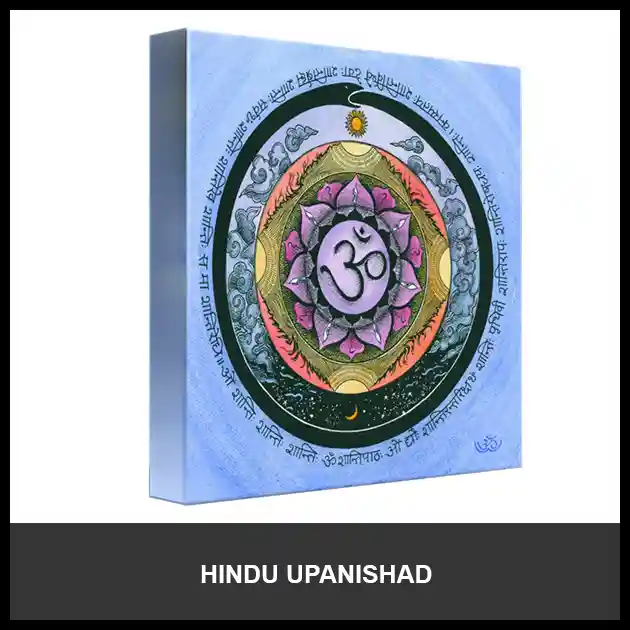
Who started or founded Hinduism?
This is an unanswerable question since Hinduism has no single known founder.
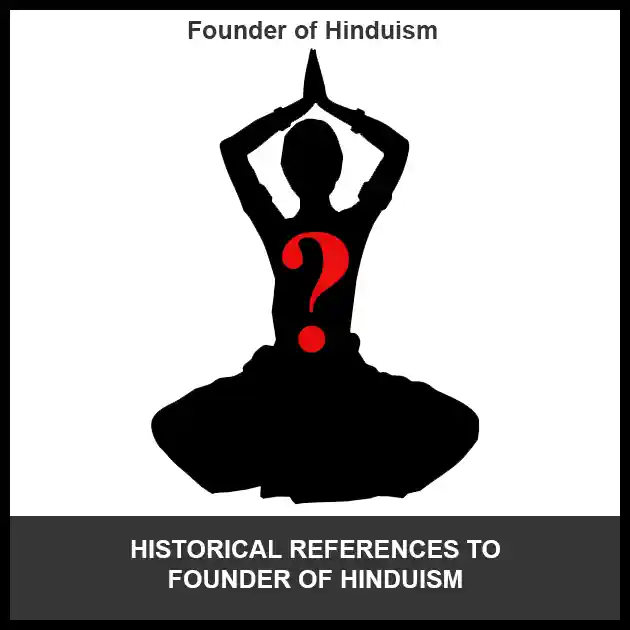
When and how did Hinduism begin?
There is no specific date for Hinduism's beginning. It appears that Hinduism evolved gradually over time from elements that were already discernible approximately 3,500 years ago. Some scholars have made the argument that there isn’t one religion called Hinduism, since it is comprised of several varied and changing systems of belief, ritual, and philosophy. The term Hinduism arose in the 17th or early 18th century which describes a family of related worldviews, practices, and beliefs forming the synthesis of distinct yet more or less compatible rituals and ideas that originated in the country Indian.
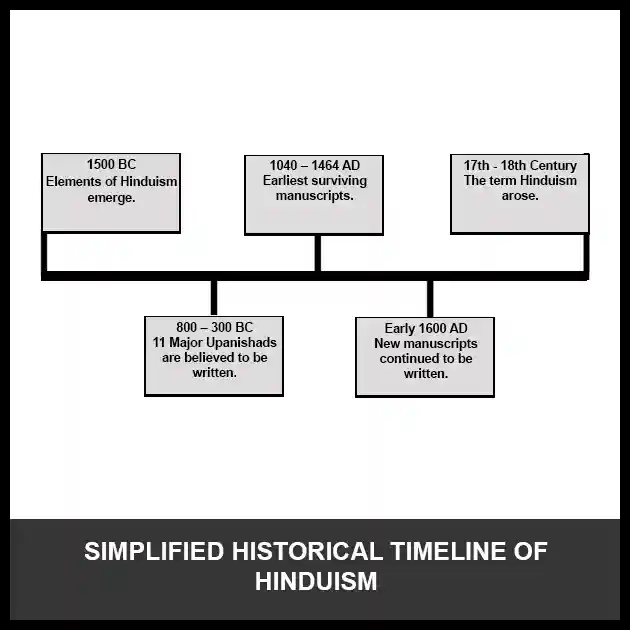
What is Hinduism’s most important geographic location or holy site?
Because of Hinduism's unusual past, there is not just one single most important geographic location, instead, the religion has many areas. There are, however, seven cities commonly recognized as the holiest locations. The holiest Hindu cities are Ayodhya, Mathura, Haridwar, Varanasi, Kanchipuram, Dvaraka, and Ujjain. Many might also say that the holiest historic Hindu temples would be the Gupta-era Bhitargaon temple near the Kanpur District, the Kailasa temple at Ellora, and the temple complex at Angkor Wat.
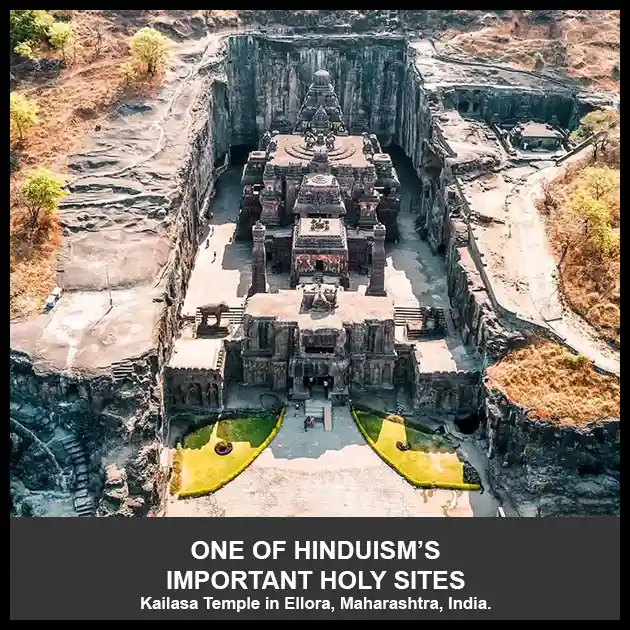
What are Hinduism’s most important historic events?
Many Hindus may point to the writing of the Vedas (c.1500 B.C. – c.500 B.C.), the Bhagavad Gita text being written (c.400 B.C. – c.200 A.D.), the Hindu temple at Bhitargaon being built (c.480 A.D. – c.500 A.D.), the temple at Ellora being completed and dedicated to Shiva (c.770 A.D.), and the construction beginning for the Hindu temple at Angkor Wat(c.1122 A.D.).
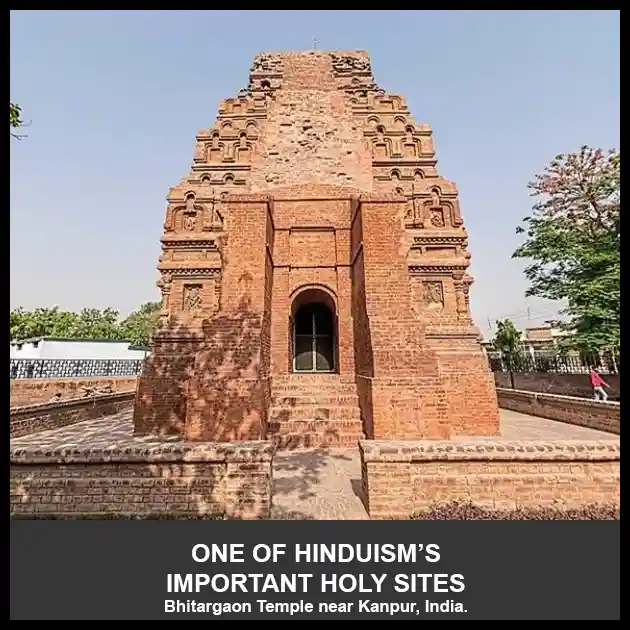
EQUALS ACCURACY OVER TIME FOR THE HINDU RELIGION: UPANISHAD
(weight of evidence conclusion)
Introduction:
In this very short section, we will discuss the results of the data collected from B-RAID and UM-Coc for the Hindu religion.
Hindu B-RAID System Evidence (quantity + quality) data plus the Unbroken Manuscript Chain-of-Custody Evidence (track record) data from the previously discussed peer-reviewed sources was condensed into the following single line, which we have extracted with permission from the publisher of the full dataset.
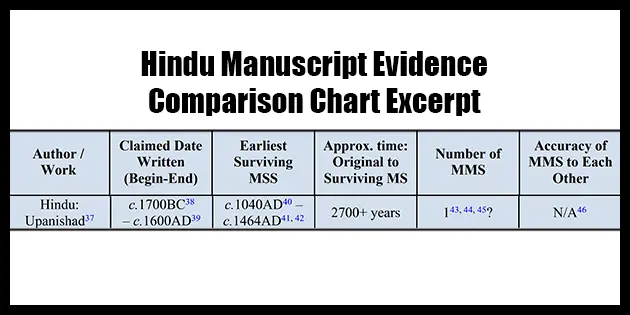
Weight of Evidence Conclusion:
The calculated accuracy of the Hindu Upanishad manuscripts over time is not applicable as represented by a (N/A) within the excerpt. This is because of two main reasons. First, many of the older texts have undoubtedly deteriorated because of being written on fragile palm leaves and birch bark Second, The manuscripts were said to be written from 1700 B.C. and continued to be written throughout the early 1600 A.D., and since the texts continued to be modified there is no direct way to calculate accuracy over time.
In the case of the Hindu Upanishad, both the general B-RAID system and UM-CoC never truly manifested.
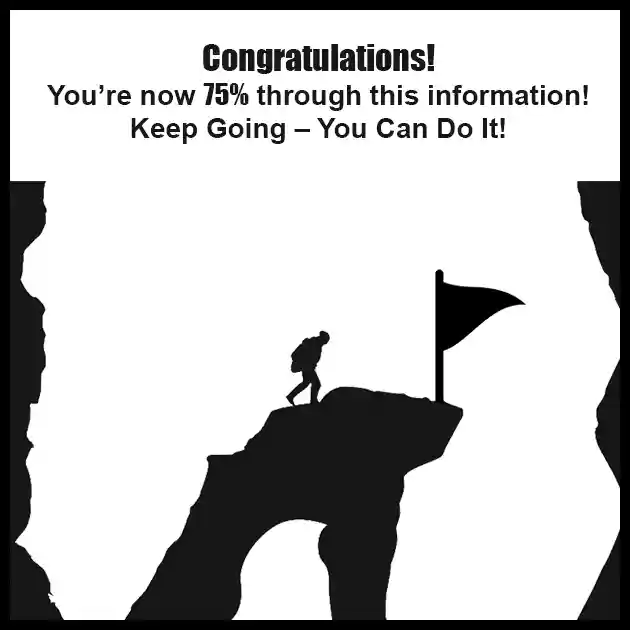
SECTION #6: BUDDHIST RELIGION: SUTRAS
BASIC INFORMATION ABOUT THE BUDDHIST RELIGION: SUTRAS
Introduction:
The following will collectively answer the most basic prerequisites and introductory questions to what Buddhism is about without discussing the long list of Buddhist beliefs.

What is the name given to members of Buddhism?
Buddhism is comprised of (made up of) those who call themselves Buddhists.
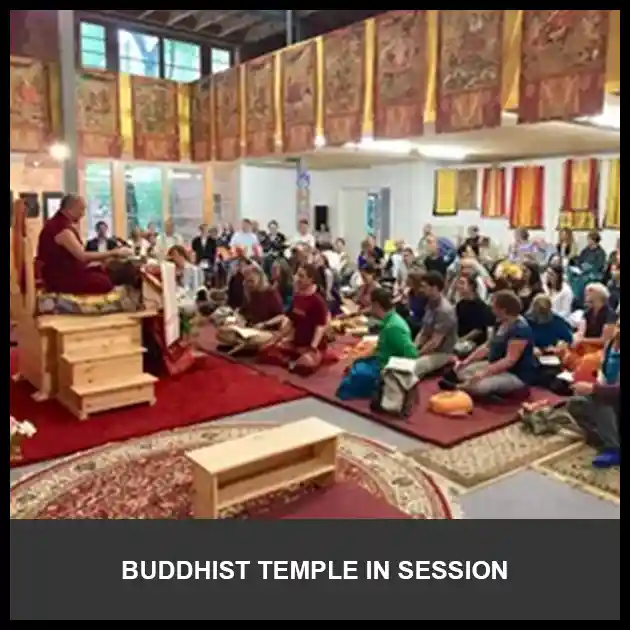
What is the current total global Buddhist population of size followers?
According to World Population Review, Buddhism has 507 million estimated followers as of 2020. The population of Buddhists is expected to continue to grow in 2024 and beyond.
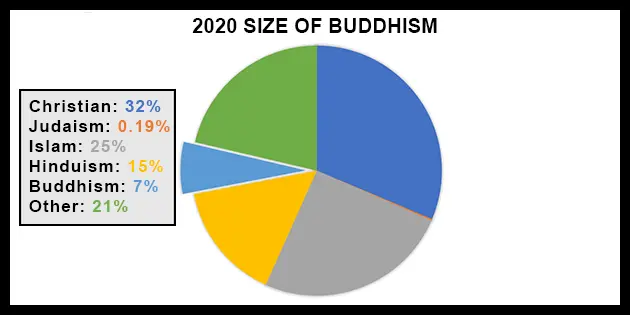
What are the most important Buddhist manuscripts / Buddhist texts?
Most Buddhists view the Buddhist Sutras in high regard, but there is also some overlap between the text used by Buddhists and Hindus.

Who started or founded Buddhism?
Buddhism was founded by a Hindu teacher born in c.563 B.C. named Siddhartha Gautama, who is also widely known as Buddha, and based on a written account he was the son of a king and queen. Buddha means Awakened One or Teacher. Siddhartha never claimed to be a god or a prophet.
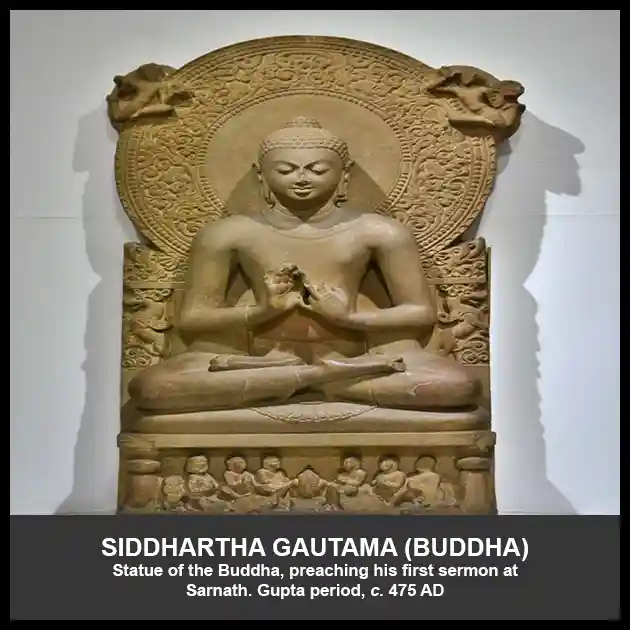
When and how did Buddhism begin?
Buddhism began in ancient India, originating between the 6th and 4th centuries B.C. and is directly attributed to Prince Siddhartha Gautama (Buddha) whose most important doctrines he taught included the Four Noble Truths and the Eight-Fold Path. After Buddha died his wandering followers gradually settled into monasteries as monks who verbally taught others. Buddhist teachings were passed down orally until they were later written as Buddhist sutra texts.

Many often wrongly believe the Dalai Lama is in charge of all Buddhism. The Dalai Lama is only the leader of the Buddhist denomination called the Gelug or spelled Geluk. Gelug, also known as the Yellow Hat school or sect, is the newest of the four major schools of Tibetan Buddhism. The Yellow Hat sect was founded by Je Tsongkhapa in 1357–1419 AD. Unlike other pious Buddhist sects seeking humble lifestyles, the Dalai Lama’s winter home is one of the top ten largest palaces in the world (Potala Palace) with an interior space of 426,509 square feet.
What is Buddhism’s most important geographic location or holy site?
Buddha himself identified the following four sites that were deemed the most worthy of pilgrimage for his followers: Lumbini in Nepal – the birthplace of Buddha, Bodh Gaya in Bihar, India – is believed to be the Bodhi Tree where Siddhartha Gautama attained enlightenment and became the Buddha, Sarnath in Pradesh, India – where Buddha delivered his first sermon, Kushinagar in Uttar Pradesh, India – where Buddha died.

What are Buddhism’s most important historic events?
The majority of Buddhists would say the birth, enlightenment, teachings, and death of the Buddha (Siddhartha Gautama).
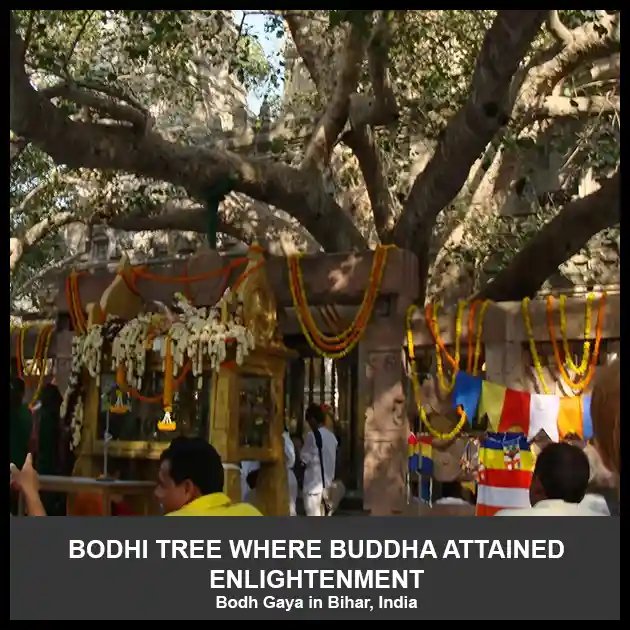
EQUALS ACCURACY OVER TIME FOR THE BUDDHIST RELIGION: SUTRAS
(weight of evidence conclusion)
Introduction:
In this very short section, we will discuss the results of the data collected from B-RAID and UM-Coc for the Buddhist religion.
Buddist B-RAID System Evidence (quantity + quality) data plus the Unbroken Manuscript Chain-of-Custody Evidence (track record) data from the previously discussed peer-reviewed sources was condensed into the following single line, which we have extracted with permission from the publisher of the full dataset.
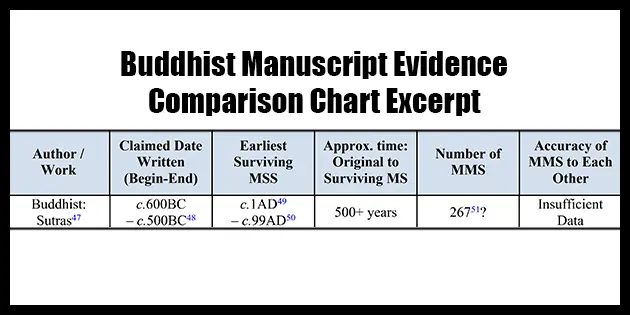
Weight of Evidence Conclusion:
The calculated accuracy of the Buddhist Sutras manuscripts over time cannot be calculated, sharing many similar problems with the Hindu text, having used fragile palm leaves and birch bark. In the case of Buddhism, the data has simply been flagged as Insufficient Data
.
SECTION #7: OTHER RELIGIONS
BASIC INFORMATION ABOUT THE OTHER RELIGIONS
What is the current total global population size of unaffiliated and other religions?
According to World Population Review, unaffiliated and other religions make up approximately 1.62 billion people as of 2020. The population of unaffiliated and other religions is expected to continue to grow in 2024 and beyond.
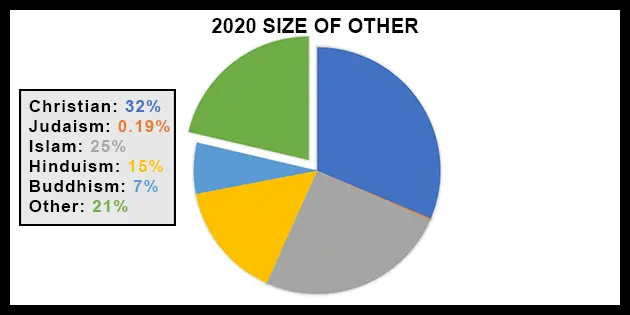
There are many offshoots of the major primary religions of the world, which often hold to the same or similar tenets and beliefs of their parent religion. As such, we will not mention those off-shoot denominations or sects here.
What are the minor secondary religions of the world?
There are nearly unlimited minor religions throughout the world, and because of this, it would be nearly impossible to document all of them. Some of the minor religions are Witchcraft (Wicca, etc), Creole religions (Vodoo, etc.), and many more. A considerable number would be considered pagan per the dictionary definition.
Why not spend a lifetime tracking down all of the minor secondary religions?
Since you decided to pursue the WEIGHT OF EVIDENCE PATH previously discussed, there is no purpose in pursuing the smaller minor religions. This is because they share something in common, which is that they have a far lighter-weight of evidence profile. If you need to, please revisit the previous section describing the quantity of evidence + quality of evidence + track record of the person(s) or group(s) producing the evidence, which then becomes the final WEIGHT OF EVIDENCE. A heavy weight of evidence equals what we believe to be true.
SECTION #8: EXTRA INFORMATION
EYEWITNESS TESTIMONY OF WITNESSES
All evidence unequivocally ends up becoming dependent on eyewitness testimony regardless of what method is used to obtain the evidence. This is because any evidence can be based on truth or deception. Any form of evidence can be faked with enough people, capabilities, effort, time, motives, money, and influence. Even with modern technology, we must still rely on the truthfulness and accuracy of the people (witnesses) who make the technology, those who collect the data, those who store the data, those who protect the data, those who interpret the data, those who present the data, etc. Each person must eventually even rely on the reliability of the testimony of their own five senses in that their senses are not misleading them.
RELIABLE VS UNRELIABLE WITNESS TESTIMONY
The truthfulness of a witness is of the utmost importance. The opposite of truth is lies and deception. If for any reason a witness will lie or deceive, then that witness is not as reliable as a witness who will not. If a witness can be threatened, bribed, blackmailed, seduced, or peer pressured into altering the truth then they are not as reliable as a witness who is not influenced by those things. These things which apply to one witness can apply to large groups of past, present, and future witnesses.
IS THERE PROOF GOD DOES NOT EXIST?
Lack of evidence is not evidence of lack.
- Anonymous
Or stated another way: Not having enough evidence does not prove more evidence does not exist.
There has never been evidence resulting in proof of God not existing, nor can there ever be. A person must never conclude that something does not exist simply because they have not yet seen evidence that it does. To do so would exclude most discoveries in the natural world, let alone things beyond the natural world. For example, if a person or group of people have never heard or seen evidence for the existence of dinosaurs despite reliable witnesses stating they do, that person or group should never conclude they do not exist.
FULL DATASET INFORMATION
The dataset excerpts from the previous sections on religion were extracted with permission from the publisher of the full dataset called, The Eclectic Manuscripts Comparison Chart: Bibliographical Test.
The full chart will enable you to quickly compare the religious manuscripts of the Christian New Testament, the Jewish Torah (Old Testament), the Muslim Quran, the Hindu Upanishad, and Buddhist Sutras.
The full religion comparison chart also contains a comparison of the manuscripts from Homer's Iliad, Aristotle's writings, and Plato's Tetralogies.
Each of the manuscripts for the religions and other writings is hyperlinked to dozens of references for further research.
Also, see the 'Additional Religion Resources' below.

Thank you for choosing THE OFFICIAL HOW TO CHOOSE A RELIGION WEBSITE.
Last Changed/Updated On: 1-10-2024
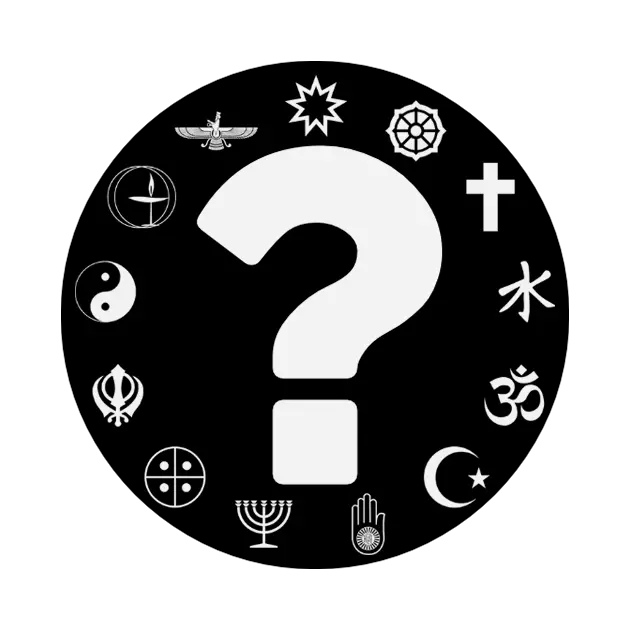
ADDITIONAL RELIGION RESOURCES
Was the previous manuscript information enough evidence to choose a religion?
If not, please seriously consider the following additional resources. They will provide you with much more evidence, including manuscript lineage evidence and pitfalls to watch out for.
#1 Evidence-based religious classes 1 of 3.
#2 The 'Evidence That Demands A Verdict' book.
A heavy weight of evidence equals what we understand to be true.

